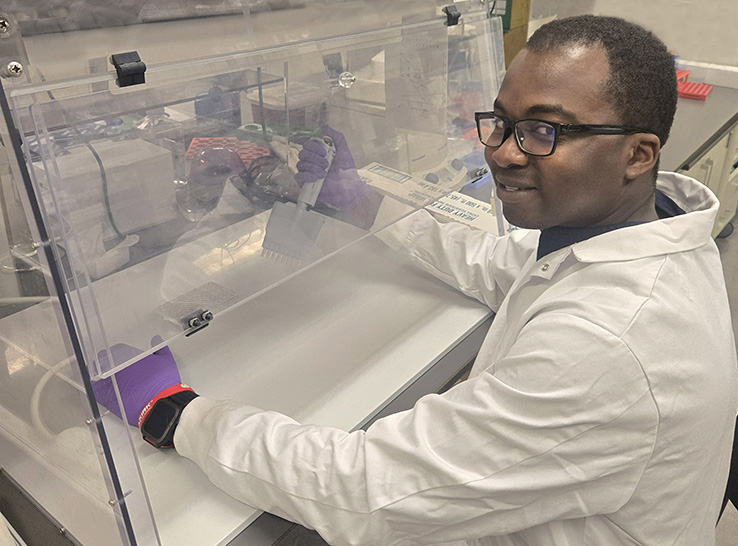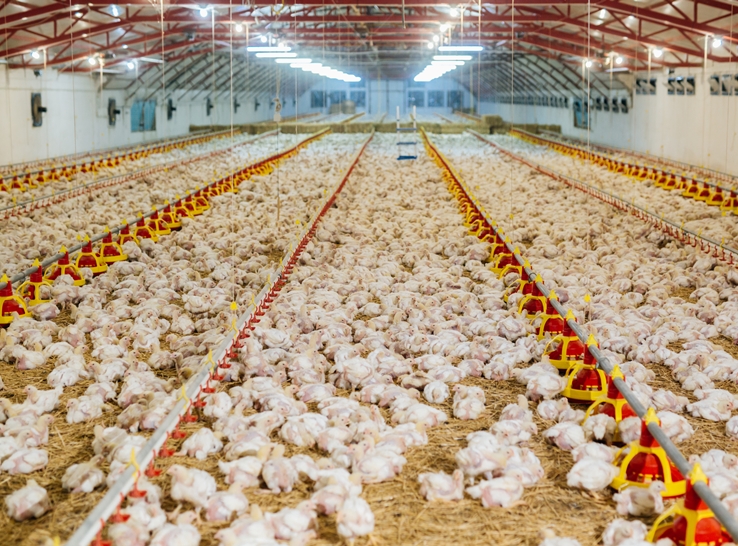Research led by Phillip Yeboah, PhD candidate at North Carolina State University, determined that autofluorescence provides a method for determining whether Eimeria oocysts are viable and capable of causing infection.
Coccidiosis is a major concern for the poultry industry, resulting in tremendous economic losses. “Eimeria causes losses of $14.4 billion annually in the global poultry industry and $1.6 billion in the US alone,” said Yeboah during his presentation at the 2025 International Poultry Scientific Forum.
Along with reporting his research results, Yeboah discussed the current approaches to control Eimeria, the rise of antimicrobial resistance and the need to develop cost-effective strategies to determine the viability of oocytes and their potential to cause disease.
Resistance problem
“Control methods revolve around synthetic chemicals and ionophores, but these methods are becoming ineffective,” Yeboah stated. He commented that while phytogenetics (plant-based compounds) are being researched and used for treatment, the conversation has evolved. Discussions now center around delaying the onset of antimicrobial resistance using the bioshuttle program.
The bioshuttle program “is the use of a different class of antimicrobials, along with vaccination, in a similar production cycle,” he described, also mentioning the use of a rotation method within the bioshuttle method, which takes advantage of a different production cycle.
Viability
Yeboah explained that the traditional viability testing involves infecting birds with Eimeria, then examining the loss of bodyweight, resulting lesions and mortality. But, he noted, this is a costly approach and doesn’t enable oocyst quantification. Another method is excystation — breaking down the oocyst to check for motile exposure. However, this method requires skilled personnel and a high oocyst concentration.
Although viable oocysts are necessary for lab testing and challenge studies, several factors influence viability, including:
- Age
- Temperature
- Storage time
- Amylopectin levels
Yeboah pointed out that amylopectin, the oocyst’s energy source, decreases as energy is used, which ultimately impacts the viability of Eimeria. A 1980 study by Augustine revealed that slight temperature changes (4° F in this study) significantly affect amylopectin levels and oocyst viability.1
Predicting infection
“Simple tests to predict the chance of infection are needed,” Yeboah said.
When examining Eimeria oocysts with a frozen microscope, many were brightly fluorescent. Lipofuscin, a yellow-brown aging pigment, is released as Eimeria degrades, he noted.
This led Yeboah to hypothesize that autofluorescence indicates Eimeria is not viable. Challenge studies conducted by Yeboah at 113° F (45° C) and room temperature confirmed that fluorescent oocysts were less likely to cause coccidiosis symptoms than those that didn’t fluoresce, supporting the earlier study. He also found that the oocysts at room temperature were more likely to cause infections.
“This study shows that autofluorescence provides an accurate process to evaluate oocyst viability. This simple method can be used to screen anticoccidial compounds in the lab rather than actually infecting birds,” Yeboah concluded.
1 Augustine PC. Effects of storage time and temperature on amylopectin levels and oocyst production of Eimeria meleagrimitis oocysts. Parasitology. 1980 Dec;81(Pt 3):519-24. doi: 10.1017/s0031182000061904. PMID: 7232032.







